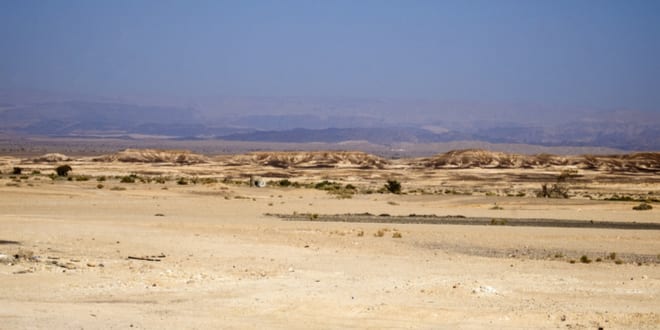The world is increasingly drying up, with hot winds and inadequate rainfall – coupled with overgrazing, urbanization and climate change – turning more and more land into deserts.
According to the UN Convention to Combat Desertification, over 30% of the land in the US is affected by desertification, which is defined as soil productivity loss and the thinning out of the vegetative cover because of human activities and climatic variations such as prolonged droughts and floods.
In Spain, across the Atlantic, 20% of Spain’s land mass is at risk of turning into desert, while in China sand drifts and expanding deserts have claimed nearly 700,000 hectares of cultivated land, 2.35 million hectares of rangeland, 6.4 million hectares of forests, woodlands and shrub lands since the 1950s.
Deserts reportedly cover about two-fifth of our planet’s land area, and some two billion people live in such surroundings. Desertification leads to persistent degradation of dryland and fragile ecosystems due to human activities and variations in climate. Desertification, in short, is when land that was originally of another type of biome turns into a desert biome because of changes of all sorts.
When farmers overgraze their cattle, sheep and other animals, soils are more vulnerable to degradation because relatively dry tracts of land become increasingly arid, typically losing their bodies of water, vegetation and wildlife. Deserts appear automatically over the natural course of Earth’s life cycle, and can be called a natural phenomenon. But when deserts appear due to the rampant and unchecked depletion of nutrients in soil that are essential for it to remain fertile, “soil death” occurs.
But there is hope – from Israel – for bringing desert soil back to life. “Deserts have been expanding for decades, but it doesn’t have to be an irreversible process,” according to Prof. Ehud Meron of the Swiss Institute for Dryland Environmental and Energy Research (SIDEER) – one of the Jacob Blaustein Institutes for Desert Research – at the Sde Boker campus of Ben-Gurion University of the Negev.
He and colleagues at BGU have shown in model studies that ecosystems can be rescued from collapsing to “bare soil” or desert states by carrying out simple interventions at the border of the desert. He calls the answer to desertification the insertion of “vegetation fingers” in the sand to reverse the dangerous process.
Meron’s research group has developed a platform of mathematical models for dryland ecosystems that serves as an incubator for novel ideas how to combat and even reverse the process of desertification. In a recent study that appeared in Physical Review Letters, postdoctoral fellow Dr. Cristian Fernandez-Oto (now at the University of the Andes in Chile), doctoral student Omer Tzuk and Meron used this platform to explored the possible role of instabilities in reversing desertification.
Instabilities, they note, are generally considered events to avoid, but in drylands, they may prevent desertification.
One form of desertification is a domino-like process of plant mortality at border lines between bare-soil and vegetation areas that results in a desertification front and the gradual replacement of vegetation by bare soil.
“We uncovered an instability by which straight desertification fronts develop ‘vegetation fingers’ that grow backward into bare soil areas and thereby reverse the desertification process,” explained Meron. “The instability is realized under conditions of fast water transport towards the growing vegetation finger. Such water transport not only accelerates the finger’s growth but also inhibits vegetation growth on both sides of the finger, and thereby drives the instability.”
The researchers further suggest possible local manipulations in the front zone that can trigger the instability, such as the introduction of a new plant species that changes the water-uptake rate or periodic clear cutting to reduce the competition for water. Once the instability sets in, a gradual self-recovery process begins with no need for further intervention.
“Other types of front instabilities can be envisaged that result in self-recovery, but additional studies, both theoretical and empirical, are needed to fully explore these ideas and their translations into land-management practices,” Meron continued.




